Showing Spotlights 265 - 272 of 556 in category All (newest first):
 Conventional carbon-fiber electrodes have been the material of choice for identifying the chemical nature of neurotransmitters in the brain. Unfortunately, they have some limitations that leave some of the molecules that researchers are interested in just out of our reach. Further miniaturization of biologically compatible, carbon based electrode materials to the nanoscale promises to enhance the very characteristics that made microelectrodes so transformative in the first place, enabling high speed measurements in discrete spatial locations.
Conventional carbon-fiber electrodes have been the material of choice for identifying the chemical nature of neurotransmitters in the brain. Unfortunately, they have some limitations that leave some of the molecules that researchers are interested in just out of our reach. Further miniaturization of biologically compatible, carbon based electrode materials to the nanoscale promises to enhance the very characteristics that made microelectrodes so transformative in the first place, enabling high speed measurements in discrete spatial locations.
Sep 3rd, 2013
 Researchers report on a novel targeted drug-delivery vehicle for cancer therapy, which can selectively target the tumor niche while delivering an array of therapeutic agents. This targeting platform is based on unique vesicles ('nanoghosts') that are produced, for the first time, from intact cell membranes of stem cells with inherent homing abilities, and which may be loaded with different therapeutics. The team showed that such vesicles, encompassing the cell surface molecules and preserving the targeting mechanism of the cells from which they were made, can outperform conventional delivery systems based on liposomes or nanoparticles.
Researchers report on a novel targeted drug-delivery vehicle for cancer therapy, which can selectively target the tumor niche while delivering an array of therapeutic agents. This targeting platform is based on unique vesicles ('nanoghosts') that are produced, for the first time, from intact cell membranes of stem cells with inherent homing abilities, and which may be loaded with different therapeutics. The team showed that such vesicles, encompassing the cell surface molecules and preserving the targeting mechanism of the cells from which they were made, can outperform conventional delivery systems based on liposomes or nanoparticles.
Jul 26th, 2013
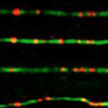 Understanding the purpose of the molecular modifiers that annotate DNA strands - called epigenetic markers - and how they change over time will be crucial in understanding biological processes ranging from embryo development to aging and disease. But just how the markers work, and what different markers mean, is painstaking work that still has left a long way to go. Advancing this research field, scientists have now reported the first direct visualization of individual epigenetic modifications in the genome. This is a technical and conceptual breakthrough as it allows not only to quantify the amount of modified bases but also to pin point and map their position in the genome.
Understanding the purpose of the molecular modifiers that annotate DNA strands - called epigenetic markers - and how they change over time will be crucial in understanding biological processes ranging from embryo development to aging and disease. But just how the markers work, and what different markers mean, is painstaking work that still has left a long way to go. Advancing this research field, scientists have now reported the first direct visualization of individual epigenetic modifications in the genome. This is a technical and conceptual breakthrough as it allows not only to quantify the amount of modified bases but also to pin point and map their position in the genome.
Jul 24th, 2013
 When nanoparticles enter the human body, for instance as part of a nanomedicine application, they come into immediate contact with a collection of biomolecules, such as proteins, that are characteristic of that environment, e.g. blood. A protein may become associated with the nanomaterial surface during a protein-nanomaterial interaction, in a process called adsorption. The layers of proteins adsorbed to the surface of a nanomaterial at any given time is known as the protein corona. The type and amount of proteins in the corona composition is strongly dependent on several factors, including physicochemical properties of nanoparticles; protein source; and protein concentration - and temperature.
When nanoparticles enter the human body, for instance as part of a nanomedicine application, they come into immediate contact with a collection of biomolecules, such as proteins, that are characteristic of that environment, e.g. blood. A protein may become associated with the nanomaterial surface during a protein-nanomaterial interaction, in a process called adsorption. The layers of proteins adsorbed to the surface of a nanomaterial at any given time is known as the protein corona. The type and amount of proteins in the corona composition is strongly dependent on several factors, including physicochemical properties of nanoparticles; protein source; and protein concentration - and temperature.
Jul 23rd, 2013
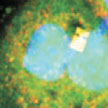 The study of individual cells is of great importance in biomedicine. Many biological processes incur inside cells and these processes can differ from cell to cell. The development of micro- and nanoscale tools smaller than cells will help in understanding the cellular machinery at the single cell level. All kinds of mechanical, biochemical, electrochemical and thermal processes could be studied using these devices. Researchers have now demonstrated a nanomechanical chip that can be internalized to detect intracellular pressure changes within living cells, enabling an interrogation method based on confocal laser scanning microscopy.
The study of individual cells is of great importance in biomedicine. Many biological processes incur inside cells and these processes can differ from cell to cell. The development of micro- and nanoscale tools smaller than cells will help in understanding the cellular machinery at the single cell level. All kinds of mechanical, biochemical, electrochemical and thermal processes could be studied using these devices. Researchers have now demonstrated a nanomechanical chip that can be internalized to detect intracellular pressure changes within living cells, enabling an interrogation method based on confocal laser scanning microscopy.
Jul 18th, 2013
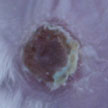 Despite significant advances in the medical/surgical management of severe thermal injury, wound infection and subsequent sepsis persist as frequent causes of morbidity and mortality for burn victims not only due to the extensive compromise of the protective barrier against microbial invasion, but also as a result of growing pathogen resistance to our therapeutic options. Researchers have now demonstrated that encapsulating Amphotericin B, a intravenously administered potent fungicidal polyene macrolide, in nanoparticles increased its killing impact against numerous candida species, was more effective at preventing candidal biofilm formation, and cleared a mouse burn model infected with candida more effectively than solubilized amphotericin.
Despite significant advances in the medical/surgical management of severe thermal injury, wound infection and subsequent sepsis persist as frequent causes of morbidity and mortality for burn victims not only due to the extensive compromise of the protective barrier against microbial invasion, but also as a result of growing pathogen resistance to our therapeutic options. Researchers have now demonstrated that encapsulating Amphotericin B, a intravenously administered potent fungicidal polyene macrolide, in nanoparticles increased its killing impact against numerous candida species, was more effective at preventing candidal biofilm formation, and cleared a mouse burn model infected with candida more effectively than solubilized amphotericin.
Jun 21st, 2013
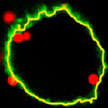 While nanoparticles are emerging as drug carriers for targeted nanomedicines, preclinical assays to test nanoparticle efficacy are hampered by the lack of methods to quantitatively determine internalized particles. A novel method is suited to pave the way for preclinical testing of nanoparticles to establish dose-efficacy relationships and to optimize biophysical and biochemical parameters in order to make better drug delivery vehicles. The team demonstrated that it is possible to determine the exact number of nanoparticles inside a cell through a combination of three methods and a mathematical model which they developed to link the data from these three methods.
While nanoparticles are emerging as drug carriers for targeted nanomedicines, preclinical assays to test nanoparticle efficacy are hampered by the lack of methods to quantitatively determine internalized particles. A novel method is suited to pave the way for preclinical testing of nanoparticles to establish dose-efficacy relationships and to optimize biophysical and biochemical parameters in order to make better drug delivery vehicles. The team demonstrated that it is possible to determine the exact number of nanoparticles inside a cell through a combination of three methods and a mathematical model which they developed to link the data from these three methods.
Jun 18th, 2013
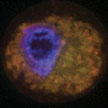 Under an applied magnetic field, iron oxide nanoparticles trigger cancer cell death by bursting intracellular organelles. These findings offer a new strategy to treat cancer using nanomaterials. Researchers may be able to administer magnetic nanoparticles externally, allow them to accumulate at the tumor site, and then irradiate them with a magnetic field to induce cancer cell death. In the past, antibodies and small molecules were used to trigger apoptosis in cancer cells. However, cancer cells often adapt to resist these treatments. Because iron oxide nanoparticles cause physical damage to cancer cells, it is difficult for them to develop resistance.
Under an applied magnetic field, iron oxide nanoparticles trigger cancer cell death by bursting intracellular organelles. These findings offer a new strategy to treat cancer using nanomaterials. Researchers may be able to administer magnetic nanoparticles externally, allow them to accumulate at the tumor site, and then irradiate them with a magnetic field to induce cancer cell death. In the past, antibodies and small molecules were used to trigger apoptosis in cancer cells. However, cancer cells often adapt to resist these treatments. Because iron oxide nanoparticles cause physical damage to cancer cells, it is difficult for them to develop resistance.
Jun 14th, 2013
 Conventional carbon-fiber electrodes have been the material of choice for identifying the chemical nature of neurotransmitters in the brain. Unfortunately, they have some limitations that leave some of the molecules that researchers are interested in just out of our reach. Further miniaturization of biologically compatible, carbon based electrode materials to the nanoscale promises to enhance the very characteristics that made microelectrodes so transformative in the first place, enabling high speed measurements in discrete spatial locations.
Conventional carbon-fiber electrodes have been the material of choice for identifying the chemical nature of neurotransmitters in the brain. Unfortunately, they have some limitations that leave some of the molecules that researchers are interested in just out of our reach. Further miniaturization of biologically compatible, carbon based electrode materials to the nanoscale promises to enhance the very characteristics that made microelectrodes so transformative in the first place, enabling high speed measurements in discrete spatial locations.
 Subscribe to our Nanotechnology Spotlight feed
Subscribe to our Nanotechnology Spotlight feed





